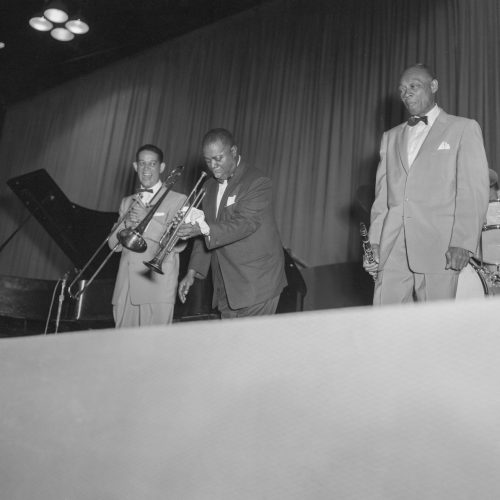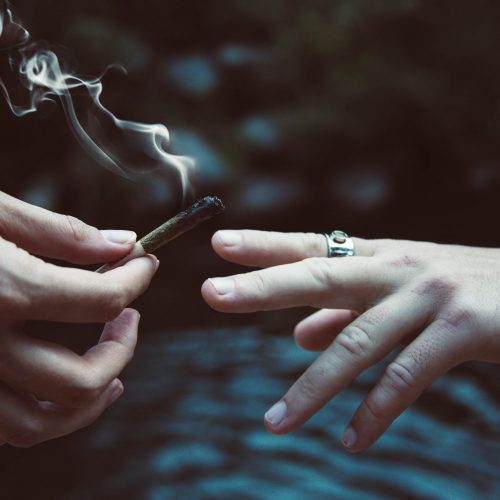Musicians are the torchbearers for legal marijuana. Since the first joint, they paved the way with “open” cannabis consumption at live performances. The harmonious relationship is deeply rooted in American history. Songs from every genre have documented the ongoing battle to overcome the negative stigma.
Artists provided the first place for fans to enjoy the plant without the negative consequences. Rumors say the Chemdawg strain was discovered at a Grateful Dead concert. Evidence, music is the conductor from the countryside to inside the city limits to lighting up legally. Hopefully consumption lounges start to open up as cannabis use becomes more normalized.
Were concerts cannabis speakeasies?
In the early 1900s, Jazz establishments in New Orleans had a reputation for open reefer consumption. Musicians even crafted songs that celebrated marijuana use. They were outspoken advocates for cannabis. People enjoyed it while listening to the live performance of songs like:
- Lucille Bogan – Pot Hound Blues (1928)
- Cab Calloway – Reefer Man (1932)
- The Harlem Hamfats – The Weed Smoker’s Dream (1936)
But in 1937, the federal government criminalized the plant. And propaganda coined it a dangerous substance. Prompting legendary stories like Vice President Richard Nixon unknowingly helping Louis Armstrong smuggle cannabis in 1953.

Photo by Provincial Archives of Alberta on Unsplash
Jazz morphed into various other music forms including R’n’B, Rap, Blues, Reggae, Hip-hop, and Rock. Within most genres, the resilient musicians and concert-going fans enjoyed some good “mezz,” “moota,” or “moocah.”
The evolution of flower power
The 1960s brought the Hippie movement and cannabis aligned with their lifestyle. Musicians, like Bob Dylan, identified with both. He’s even known for introducing John Lennon to the plant.
Do you think that’s how we got the Beatles, “Got to Get You into My Life” (1966)?
As advocates, musicians helped shift perception. They challenged the negative stereotypes attached to the plant. And their fans enjoy the vibes at concerts. Icons like Jimi Hendrix credited some of their creativity to marijuana.
Artists influenced the evolving relationship between music and cannabis consumption at concerts with the social dynamics of sharing joints. And it remains normal to smell that funky odor at any age-appropriate musical event.

Photo by Ahmed Zayan on Unsplash
Imagine the positive atmosphere at an outdoor music festival with good ganja. But the federal government classified marijuana as a Schedule I drug with the “Controlled Substances Act of 1970.”
Setting the stage for artists to openly express their affinity for the plant with songs like:
- Brewer & Shipley – “One Toke Over the Line” (1970)
- Black Sabbath – “Sweet Leaf “ (1971)
And their fans consume proudly at concerts across the country, protected by the accepting crowd.
Icons of advocacy
Musical legends like Bob Marley and Willie Nelson championed cannabis through their platforms. Both became prolific advocates with Marley’s mentor Peter Tosh having an album called “Legalize It.”

Photo by Bill Fairs on Unsplash
As a Rastafarian, Marley used cannabis as a natural aid for spiritual meditation and religious growth. Nelson became synonymous with his stash. His fans saw him as cannabis culture. The impact continued to grow, with songs like the 1978 Rick James’ hit “Mary Jane” becoming a legendary anthem.
The plant transcended musical genres. Cannabis brought people together to express an affinity for it, with classics like:
- Mighty Diamonds – “Pass the Kutchie” (1981)
- The Toyes – “Smoke Two Joints” (1983)
Concerts created a communal aspect to the cannabis culture that continues to this day.
Cannabis consumption is poppin’
45% of hip-hop songs mentioned marijuana in the 1990s. And artists in every genre pushed the plant’s popularity into the mainstream. How many stories did we hear about tour buses with mass quantities of cannabis?

Photo by Budding . on Unsplash
In 1992, Dr. Dre’s debut album “The Chronic” solidified the plant as a theme in music. And there were songs like:
- Redman’s – “How To Roll A Blunt” (1992)
- Cypress Hill’s – “Stoned is the Way of the Walk” (1991) and “Hit the Bong” (1993)
- Tom Petty – “You Don’t Know How It Feels” (1994)
- Ben Harper – “Burn One Down” (1995)
- D’Angelo, “Brown Sugar” (1995)
Plus rapper Ice Cube’s movie “Friday” features the legendary “pothead” character Smokey. This era helped usher in the legalization of medical cannabis in California in 1996. However, public consumption and recreational use were not.
Cannabis consumption at concerts today
Today, musicians have diversified their roles within the cannabis industry. No longer perceived as stoners, many contribute as cannabis influences, brand owners, and advocates for consumption spaces.

Artists with cannabis cult followings like Curren$y to worldwide celebrated pop stars like Bruno Mars, promote the plant’s positive aspects. With legalization alternative consumption methods like edibles, vape pens, and patches became more popular. So everyone, from cultivators to medical practitioners, has enjoyed cannabis at a concert.
Promoting cannabis brands
The journey from negative propaganda to popular marketing showcases the resilience of cannabis culture. Musicians’ normalization of cannabis use in their songs has turned into brand endorsements and business investments.

Artists like Erykah Badu, Wiz Khalifa, and Method Man all have cannabis ventures. And now, cannabis-themed events have become a staple. It promotes being mindful, responsible, and enjoying it in moderation.
Cannabis-friendly concerts, festivals, and consumption lounges?
Concerts’ unique atmospheres are the cornerstone of cannabis culture. The journey of legalization showcases the resilience of artists and fans. They embraced the plant first. Creating a conduit that helped destigmatize cannabis with the pair’s uncanny ability to soothe, comfort, and impact us.
Music festivals‘ role in promoting cannabis awareness and education was vital. The community must now advocate for spaces to responsibly enjoy cannabis and good tunes.








